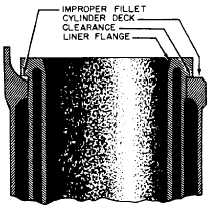Figure 3-3.—Improperly seated cylinder liner.
improper fillet, grind it down until the lower surface of
the flange seats properly on the mating surface of the
cylinder deck.
An oversized sealing ring may cause improper
positioning of the liner. As the sealing ring is
overcompressed, the rubber loses its elasticity and
becomes hard, which may cause the liner to become
distorted.
Use feeler gauges to check the clearance between
the mating surfaces. If the manufacturer’s technical
manual specifies the distance from the cylinder deck to
the upper surface of the liner flange, use this dimension
to check on the seating of the liner.
Obstructions in the combustion chamber may be
destructive not only to the liner but also to the cylinder
head and other parts.
Erosion and corrosion may take place in a few
isolated spots and weaken a liner sufficiently to cause
cracks.
Repairs
Replacement is the only satisfactory means of
correcting cracked, broken, or badly distorted cylinder
liners.
SCORED CYLINDER LINERS
Scored cylinder liners may become scored
(scratched) by several means. These scratches degrade
the engine’s performance and require some type of
repair.
Scored cylinder liners may be caused by broken
piston rings, a defective piston, improper cooling,
improper lubrication, or the presence of foreign particles
or objects. Dust particles drawn into an engine cylinder
will mix with the oil and become an effective but
undesirable lapping compound that may cause extensive
damage. The importance of keeping the intake air clean
cannot be overemphasized.
Another precaution you should take is to make sure
that when you replace a cylinder head, you leave no
metal chips, nuts, bolts, screws, or tools in the cylinder.
Causes
Scoring may be in the form of deep or shallow
scratches in the liner surface. With most liner scoring,
there will be corresponding scratches on the piston and
piston rings. The symptoms of scoring may be low firing
or compression pressure and rapid wear of piston rings.
The best method for detecting scoring is visual
inspection through liner ports, through the crankcase
housing with pistons in their top position, or when the
engine is disassembled.
Badly worn pistons and rings may cause scoring
because blowby of combustion gases increases the
temperature of the liner and may reduce the oil film until
metal-to-metal contact takes place. Inspect the pistons
and rings carefully. A piston with a rough surface (such
as one that has seized) will score the liner.
Scoring as a result of insufficient lubrication or dirt
in the lubricating oil can be prevented if lubricating
equipment (filters, strainers, and centrifuges) is
maintained properly. Lube oil must be purified
according to required procedures.
Repairs
Ship’s force personnel normally do not repair scored
liners; they replace them with spare liners. When
necessary, liners with minor scoring may be kept in
service, if the cause of scoring is eliminated and the
minor defects can be corrected. The surface of the liner
must be inspected carefully, especially in the region next
to the ports, for any burrs, projections, or sharp edges
that will interfere with piston and ring travel. Most
projections can be removed by handstoning, using a fine
stone. Figure 3-4 shows a liner before and after the ports
were stoned.
EXCESSIVELY WORN LINERS
Over a period of time, cylinder liners become worn
simply because of engine operation. The best method of
finding excessive wear is to take measurements of the
cylinder liner with an inside micrometer caliper. Two
3-4

